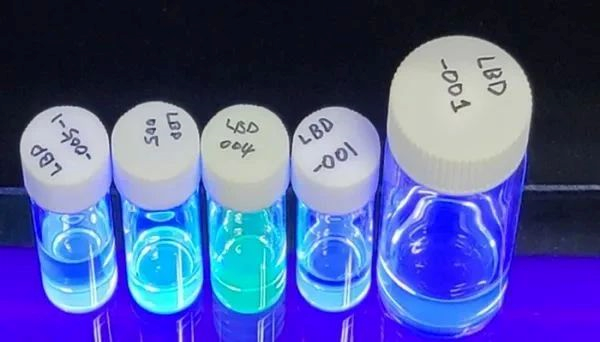Recently, Lordin, a Korean light-emitting diode (OLED) material enterprise, announced that it had successfully applied for a blue OLED patent. The patented technology can provide higher efficiency and longer service life for blue OLED luminescent materials used in OLED panels.

Oh Hyoung-yun, chief executive officer of Lordin, stressed that this patented technology is different from that of the United States and Japan. It can improve the luminous efficiency by controlling the speed of energy transfer between molecules inside the material. It is reported that the luminous efficiency of OLED materials developed using this patented technology is 4 times higher than that of ordinary OLED materials on the market before.
Lordin plans to commercialize the patented technology and apply it to smart phones and televisions in 2024.
It is worth mentioning that the patent was filed in 2021. At that time, Oh Hyung-yun said that the patented technology could provide more than 90% internal luminous efficiency in blue OLED materials, which is three times the efficiency (25%) of OLED panels currently used in smart phones and televisions.
In order to increase the luminous efficiency to more than 90%, it is necessary to use 25% of the energy of OLED luminescence (excitation state → ground state) - "singlet exciton" and the remaining 75% of the energy "triplet exciton". At present, red and green OLEDs use both singlet and triplet excitons, and use phosphorescent materials with an internal luminous efficiency of 100%. However, blue OLEDs have not separated from fluorescent materials that only use singlet excitons, and the internal luminous efficiency is only 25%.
According to the light emitting mode, OLED light emitting materials can be divided into fluorescent light emitting materials and phosphorescent light emitting materials. Among the three primary colors of light, red and green phosphorescent materials have been used in mass production on OLED displays. However, blue phosphorescent materials have defects in color purity and service life, so blue phosphorescent materials are widely used in commercial OLED products.
It is reported that the blue OLED technology that Lordin applied for patent this time will use both singlet and triplet excitons, but it is not phosphorescent or TADF. This technology adopts a "zero radius intramolecular energy transfer" (ZRIET) method. Generally speaking, the efficiency of energy transfer depends on the distance between the host and the dopant, but Lordin applies such a mechanism that if the distance is close to zero, the quantum efficiency of the molecule is irrelevant.
Because the distance radius is zero, the company synthesized a blue OLED phosphor dopant, which not only maintains the individual characteristics of the host and dopant, but also maintains the effective energy transfer rate.
Oh Hyoung-yun said that the traditional high-efficient blue OLED doped emission material on the Lordin excitation layer used two materials as the emission layer instead of the previous three. He said that Lordin has registered 4 patents related to blue OLED and plans to apply for another 19 patents.
Gestant Display Technology Co.,Ltd. could provide a series of LCD and OLED products, such as AMOLED Screen, PMOLED Screen, Round Display Screen, Flexible Display Screen, TFT LCD, Mono-LCD and Bar Display Screen. Customize PCBA/LCD/OLED/FPC/Backlight/Coverlens/TP solutions.
